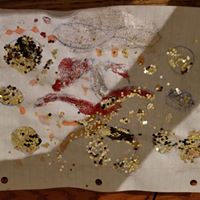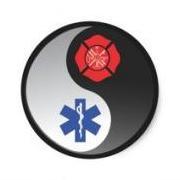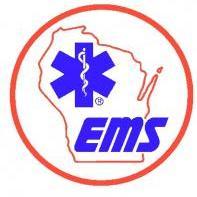
chbare
Elite Members-
Posts
3,240 -
Joined
-
Last visited
-
Days Won
66
chbare last won the day on December 18 2016
chbare had the most liked content!
Previous Fields
-
Occupation
Stuffy Academic
Contact Methods
-
Website URL
http://
-
ICQ
0
Profile Information
-
Gender
Male
-
Location
United States
Recent Profile Visitors
27,054 profile views
chbare's Achievements
Newbie (1/14)
458
Reputation
-
HelloIzJerry started following chbare
-
Hi Kenny, the chief way cyanide antidotes work is not really centered around directly acting on cytochrome c oxidase, but rather haemoglobin; at least in the case of the traditional therapy (Nitrates + Methylene Blue). As I outlined in the video, the traditional therapy changes the oxidation state of the Iron atom in the porphyrin ring of the sub units of haemoglobin. Typically, the Iron will be in a default configuration of +2/Fe II/Ferrous. Nitrates and other substances can further oxidise the Iron into the +3/FeIII/Ferric state. For reasons that I cannot pull out of my head (I suspect it has to do with the fact that Fe III is a strong Lewis acid and would not be able to coordinate reversibly with the Oxygen molecule.) Fe III does not coordinate with the Oxygen molecule. It however does coordinate exceptionally well with cyanide. This will create a situation where kinetics and thermodynamics favour cyanide coordination with the haemoglobin as opposed to the Iron in the cytochrome c oxidase enzyme. However, this also means the patient has methaemoblobin toxicity and could develop histotoxic hypoxia due to ineffective haemoglobin function. Hence, the need to administer agents that can reduce haemoglobin such as methylene blue. However, the other antidote modality in the United States works very differently. Hydroxocobalamin is a vitamin B12 precursor that contains a Cobalt atom configured in a way that allows it to have a high affinity for the cyanide molecule. The high affinity favours the coordination of cyanide with the Cobalt as opposed to the Iron in cytochrome c oxidase. Again, the exact details are complex, but chemical kinetics and thermodynamics favour Cobalt coordination in this case. A relatively inert molecule known as cyanocobalamin is produced in a 1:1 manner (1 mole of hydroxocobalamin can coordinate with 1 mole of cyanide) that is easily eliminated in the urine. Hopefully that helps out a bit. No worries about being a student. Do not let anybody make you think humanity has developed a deep understand of these things. Much of the universe is a complete mystery to us and as you progress along your educational pathway, you will likely be disturbed from how inadequate and uncertain you feel at each step along the process. My experience has been that with every degree that I have obtained, I had the expectation that I would emerge with a more comprehensive understanding of the world. Every step left me lacking significantly. This was not due to lack of trying or failure of dedication, but a fundamental part of the uncertainty of being a human being attempting to understand a vast and complex universe. Point being, I do not want you to be discouraged.
-
chbare started following NREMT-P New Integrated Scenario and Pathophysiology of cyanide poisioning
-
Good day. You are a bit off but the general reasoning in the the right direction. I will post a video that I filmed some years ago while I was in graduate school. It covers this topic, but I'd ask that you review the concepts of ferrous versus ferric Iron and ultimately, the concept of oxidation state. The Iron in Cytochrome c oxidase is in a similar configuration as haemoglobin but the enzyme dynamics dictate a narrative that is counter to the typical "blood poisoning" that sometimes surrounds a discussion of Cyanide Toxicity. I must warn you that I was grossly overweight and profoundly depressed when I made the video, so it's not super high fidelity, but the information is relevant nonetheless.
-
Dobutamine is a tricky one. Like some of the other sympathomimetics, it comes as a racemic mixture. One isomer has very mild alpha 1 agonist effects while the other isomer has mild alpha 1 antagonising effects. This means it may not reliably support blood pressure, even if it does enhance contractility. In an already hypotensive patient, dobutamine may be problematic without the concomitant use of agents that are better at supporting blood pressure.
-
NREMT-P New Integrated Scenario
chbare replied to Bent_Halligan's topic in NREMT - National Registry of EMT's
Being involved in the PCPP transition process and setting up for integrated scenario testing, I can say that the scenarios have been much more pedestrian than a massive STEMI in a car crash with Torsades. With that said, the scenarios do not need to be complex because what they require from candidates is a completely different way of thinking as opposed to the traditional trauma and medical skills stations that focus on verbalisation and "ghost" partners. One of the most significant challenges that I foresee is the fact that these scenarios are so logistically demanding, it will put a significant strain on test sites. One of the first was recently run in my state and with just a modest number of students, it took several hours. It's quite possible that multi-day test sites will emerge in order to accommodate the integrated scenarios. My college has one coming up in the next couple of months and luckily, it looks like we will be able to work with a high fidelity training lab in order to test the candidates. However, all of these resources will be thrown at testing half a dozen students. I forsee significant challenges to test sites in the future. Likely, this could mean candidates will have a hard time finding an open test site and will likely have to pay substantial fees in order to offset the cost of logistics and man-power. As it is, our test site will be closed and we will not accept any outside candidates like we used to in the past. This says nothing about the logistical requirements for programs that now must complete a portfolio on every prospective paramedic before said candidate can even consider psychomotor testing. With national funding trends when looking at colleges, I'd say programs will need to become very creative and adaptable in order to meet these logistical challenges. Also, you will need to get very good at grant writing. Over the next year or so, the testing process is likely to change as the National Registry collects data on the new exam process, so be on the look out for additional guidance.- 2 replies
-
- practicals
- nremt-p
-
(and 2 more)
Tagged with:
-
chbare started following Bad Lungs Bad Transfer
-
Unfortunately, my views have changed so much and I'm quite uncertain about past assertions, particularly in terms of education and experience that I don't think I have much beyond speculation to offer. Additionally, I'm just not as interested in discussing EMS related topics. I had a big shift in interests while in graduate school and while overlap exists with EMS, it's not as interesting or robust. Finally, I have hobbies away from EMS that demand much of my free time and if it's between an involved discussion on a computer or going out for a trail ride or endurance run, I'll choose the out of doors every time. I've meant to re-engage here but my interests are so diverse and exciting that I experience a strong pull in directions other than EMS. Back when I started here a decade or so ago, health care was my identity. Now that I have a healthier perspective and a more rounded existence, I find it difficult to spend time discussing EMS or indeed, health care in general. Particularly when I'm inundated in policy and procedure for EMS education programmes at work.
-
I thought it was worth it back in the day. Of course my motives were pretentious and derived from a "type-A personality" that wanted to be better than everyone else. When I left flying, my list of friends and colleagues was shorter and I had recurrent nightmares of crashing. To this day, I have anxiety when it comes to flying. Not sure if it was worth it in retrospect but I'm sure individual mileage will vary.
-
Big changes are coming. As our programme transitions to this format, I would urge potential paramedic students and instructors to go through the links and take time to digest the manual. I'd also urge programme directors and instructors to sign up for one of the scenario development workshops. Spots are at a premium. https://www.nremt.org/nremt/emtservices/ppcp_info.asp
-
Targeted temperature management in the ROSC patient is one of the bigger changes.
-
I've read a couple of opinions and one can be referenced here: http://www.bmj.com/rapid-response/2011/11/01/hartmann’s-solution-and-09-saline-are-both-unsuitable-severe-dka Unfortunately, the author references many sources that do not specifically consider DKA. I will also refrain from a strong ion discussion but I'm not convinced that a SID approach is superior and clinically more useful than standard approaches. Ive seen modest studies that compare NS and LR in DKA patients. One such abstract can be referenced here: http://www.ncbi.nlm.nih.gov/m/pubmed/22109683/ I would love a reasonable evidence based approach but I'm not really compelled to say NS volume expansion in a prehospital setting involving DKA is harmful. I'm willing to change my mind however.
-
Just to clarify, are you saying DKA patients should not routinely receive initial blouses of fluid?
-
Again, I think it is important to emphasise a key point. ERdoc is not talking about "awaking" people up. I believe he and others are discussing this in terms of a much more nuanced approach. As already stated, anecdote is of limited value when attempting to generalise. Is there literature that looks at the issue at hand however?
-
Do we have labs, an arterial blood gas and an x-ray? What is her plateau pressure and how has it been trending? How much PEEP is she on? Does the ventilator have a graphics package? Let's find her ideal body weight and look at a lung protective ventilator strategy. If need be, we can transition to pressure controlled ventilation or possibly a hybrid that allows us a degree of control over pressures and the inspiratory flow waveform. Is the patient comfortable?
-
Twelve mile, mass start race that begins with a one mile climb on jeep road followed by technical single track. I believe it is followed by a 12 mile "fun" run after all categories have finished. We we are still in the manuscript/peer review process. It's good enough for a poster but official publication is still in the works. That is great to hear! Good luck on the running man! I hear you with the summer issue. Luckily, we've had a wetter than normal summer here in the desert but I've had to ride on a few hot days.
-
Thanks man! Nope, no new cars. However, I bought a mountain bike and apparently harbour a desire to race as I've been training like an animal for my first race in September. The significant weight loss has been a plus for sure. Otherwise, it's been work as usual, teaching and doing an occasional EMS shift. I've also been preparing to present some research I did in grad school with my adviser at a poster session in October. How is life with you? You still PA'ing it in the ER?
-
Hello everybody, I hope this finds you well. I've been awol for quite a while. Life has been quite interesting over the past year or so as I completed grad school and apparently dealt with existential angst. Probably a mid life crisis of sorts that resulted in significant life changes much to my poor wife's horror and pleasure. I must confess that I've been less interested in traditional EMS work and have instead focused my efforts on more naturalist and interpersonal pursuits. If I'm to be honest, I find these concepts both refreshing and interesting. Now that I may have a bit more time I may look at engaging in dialogue and being a more productive member. Take care everyone.













